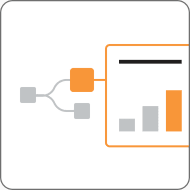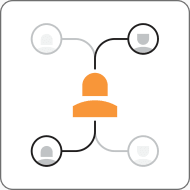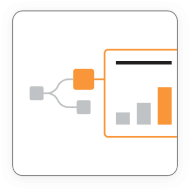KNIME: Open for Innovation

Open means transparent and trustworthy
Open platforms are built for and around human qualities.
- They’re intuitive – and as a result, usable by all. The best platforms provide easy-to-use, customizable interfaces that help you visually create and document complex processes to integrate, analyze, summarize and report data. You don’t need an advanced degree in coding any more to run sophisticated analyses.
- They radically simplify the business model in giving users free access to an unlimited and fully functional analytics environment. Commercial offerings supply value-added proprietary tools, service layers and support; it’s up to the users to construct additional layers themselves or reach out to one of the many platform partners for the functionality they need. This, in turn, builds the communal trust that nurtures open platforms and the businesses that support them.
- Open platforms are open source to foster honesty and trust. The source code is visible, and the actors and their contributions are peer-reviewed and quality-checked. Check out the KNIME open source license here.
- Open platforms are highly accessible, so breakthroughs can come from anyone and anywhere, not just from the biggest players with the deepest pockets.

Open means flexible and agile
Open platforms provide an active environment for testing new combinations of data, tools and approaches.
- Truly open platforms provide reproducibility and reusability of processes. This makes it possible to explore many variations of complex analyses simultaneously, rather than always having to start from scratch.
- Open platforms future-proof your data. No longer bound to a vendor’s proprietary platform to wait for functionality and extensions, users are free to enhance the platform themselves, or to sponsor developments by partners or the community. This maintains an open perspective for the platform and allows it to accommodate future types of data, tools and demands for ever-more sophisticated analyses.
- At the same time, open platforms allow effortless exploration of their potential without upfront investments in proprietary tools.

Open means collaborative
Open platforms fuel cooperation on data innovation.
- They are built by – and for – collaborative problem solving around the network effect of shared value creation. Users of open platforms know that they can boost the impact of their work by sharing their latest tools and learnings, vs. keeping it all to themselves.
- Open platforms make it especially easy to share and collectively evolve new data tools and insights. This helps distributed research teams join forces on complex analytics workflows across departments, regions and hierarchies and lets them tap into the cumulative smarts of external expert networks to solve internal data problems

Open means powerful
With all of these strengths, open platforms offer more powerful capabilities than a monolithic platform ever can.
- They provide greater flexibility for handling complex, diverse and large-scale datasets as organizations gear up to find the potential hidden in heterogeneous, unstructured big data.
- Open platforms provide stability and reproducibility, helping users build on previous achievements.
- They offer far greater breadth and depth to choose from when it comes to mixing-and-matching best-of-breed analytics components from all across the ecosystem.
To us at KNIME, the very openness of great open platforms for data innovation makes perfect sense: They’re more powerful because they’re highly integrative, developed around transparency and trust, and they help organizations become more agile and collaborative in their data innovation, all with fewer risks, at lower cost and in less time. And it’s because of these advantages that we’re seeing a lot of large global organizations and institutions actively consider and adopt open platforms for their data science teams.
Ultimately, we think that open platforms, their very committed users and their advanced ecosystems will bring about the most interesting breakthroughs in data-driven innovation. If you have not yet seen how KNIME has addressed Open, then download KNIME today!
Read the KNIME Open Source Story
Learn how it all began.
Ultimately, we think that open platforms, their very committed users and their advanced ecosystems will bring about the most interesting breakthroughs in data-driven innovation. If you have not yet seen how KNIME has addressed Open, then download KNIME today!